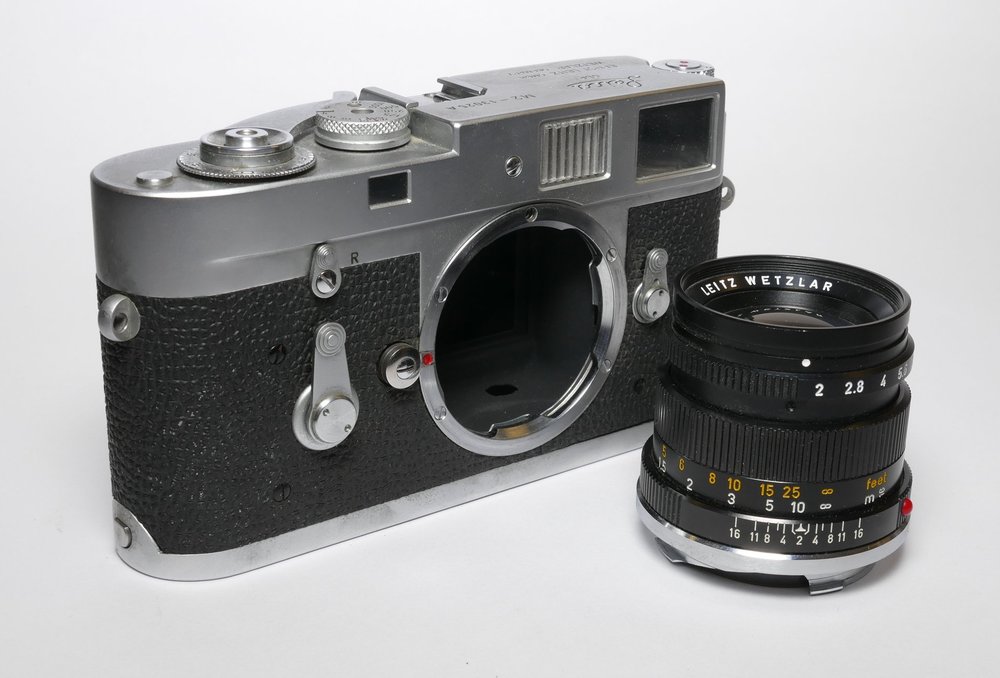
A Trap. When you think of it in these terms, Leica’s word for dummy cameras and lenses makes sense. Attrape comes from the French verb attraper, meaning to catch (a ball, or a cold for that matter) but is also used in the English sense of “being caught” or conned. From as early as the Leica III, Wetzlar has been at attraping us with a wide range of very authentic dummies, mainly intended for display purposes. As relatively inexpensive point-of-sale material, the Attrapes were also intended as a catch for opportunistic thieves.
Pre-war examples are very rare since, in many cases, the display models were cannibalised for spare parts during hostilities and immediately after the war.
Some of these Attrape cameras were even converted into working models but are given away, on later cameras, by the serial numbers which consist of five digits followed by A (you can guess what that stands for). Pre-war Attrapes had no distinctive numbering sequence.
In addition to producing the now sought-after dummy display models, Leica has charmed us over the years with cut-away demonstrators, both cameras and lenses. These were known as Schnitt models and some of them are working examples. Just think Schnitzel and you’re nearly there — it means cut or slice. If it’s not veal it must be a Leica.
Schnitt cameras were made from the IIIf onwards and cover also the IIIg and most M film cameras. If you have the space, though, why not get a large wooden display model of the M? There were a few examples based on pre-war cameras but the most common ones feature the M3. None are based on the M2 or later cameras are recorded.
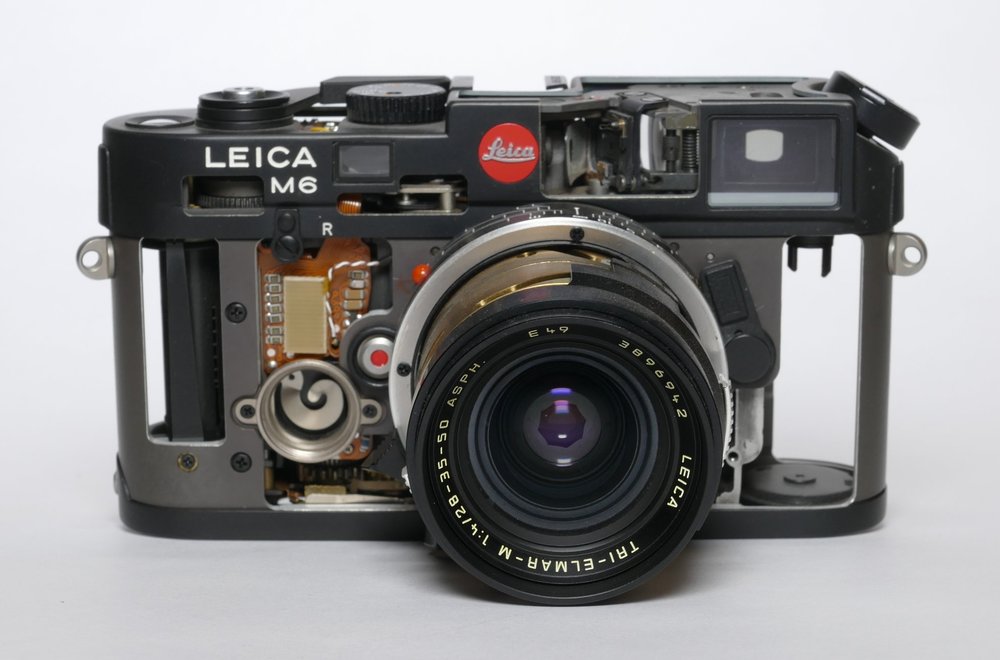
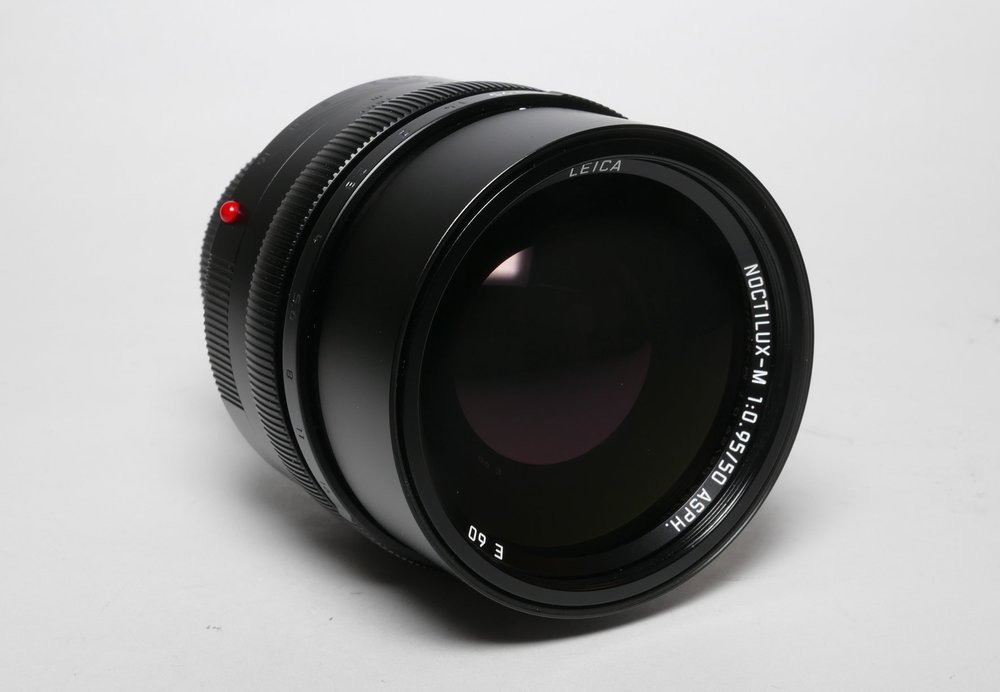
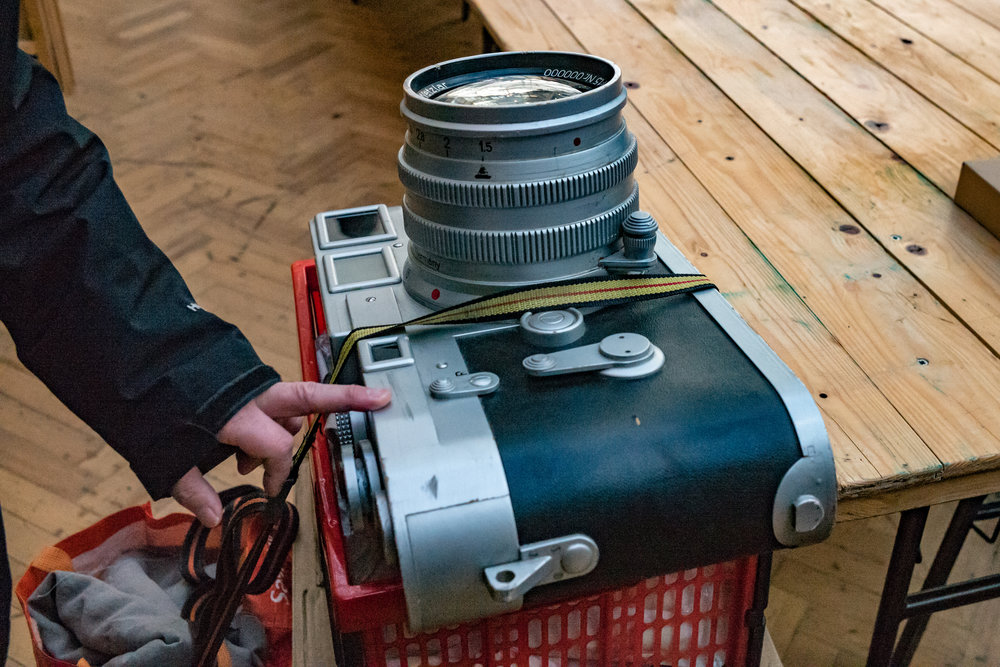
- All examples shown in this article are owned by Red Dot Cameras. Some, such as the CL outfit, are for sale (this example at £299), others are just for display purposes. Photographs by Red Dot Cameras.
- Subscribe to Macfilos for free updates on articles as they are published
- Want to make a comment on this article but having problems?

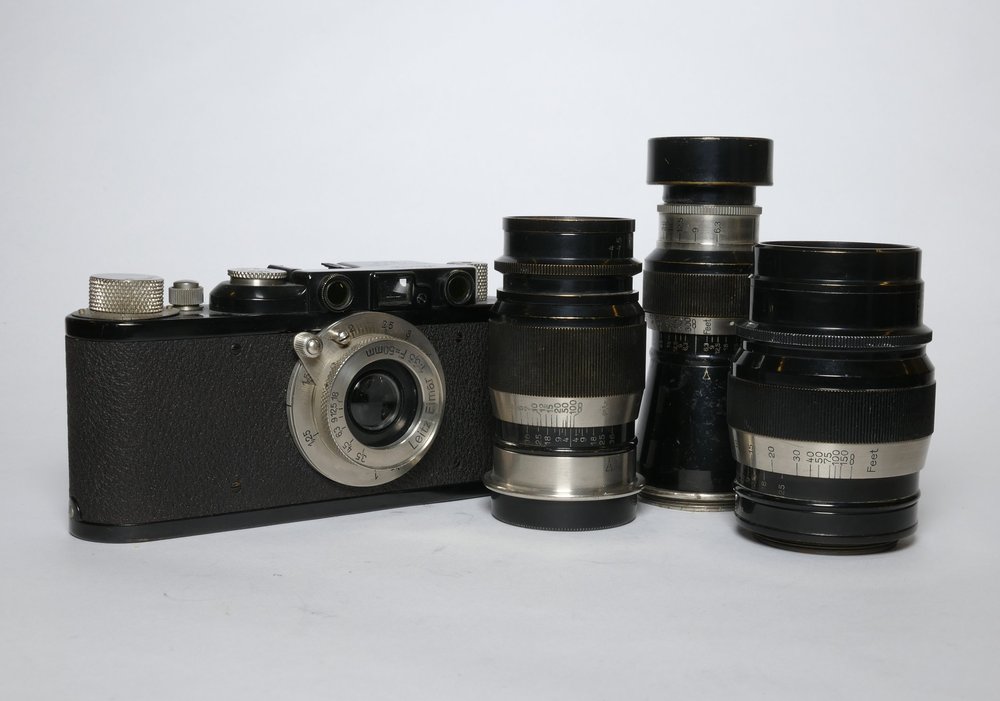
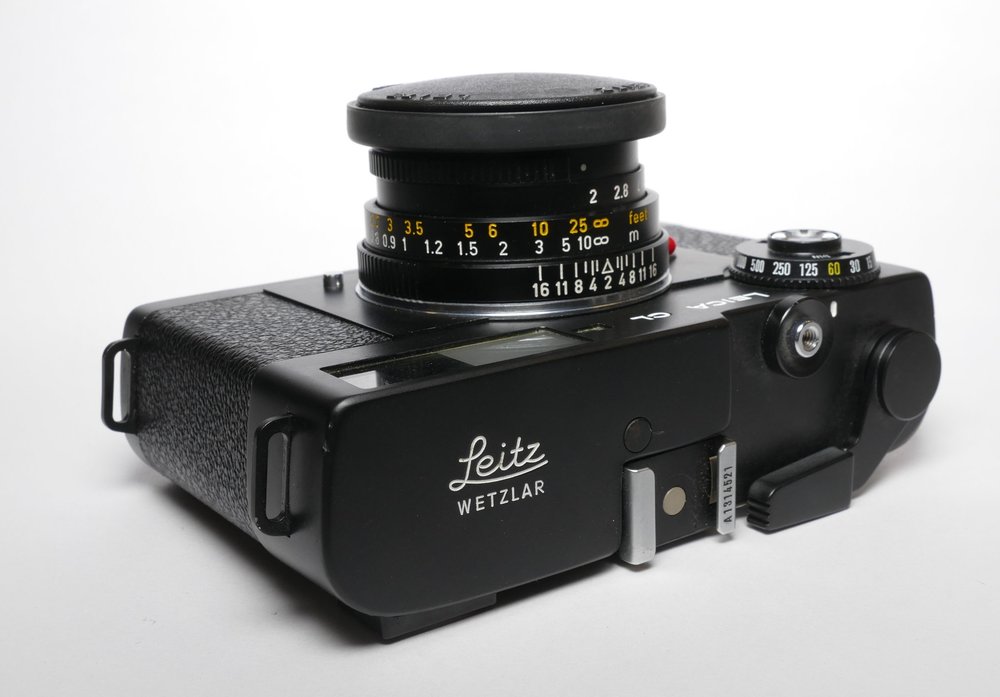
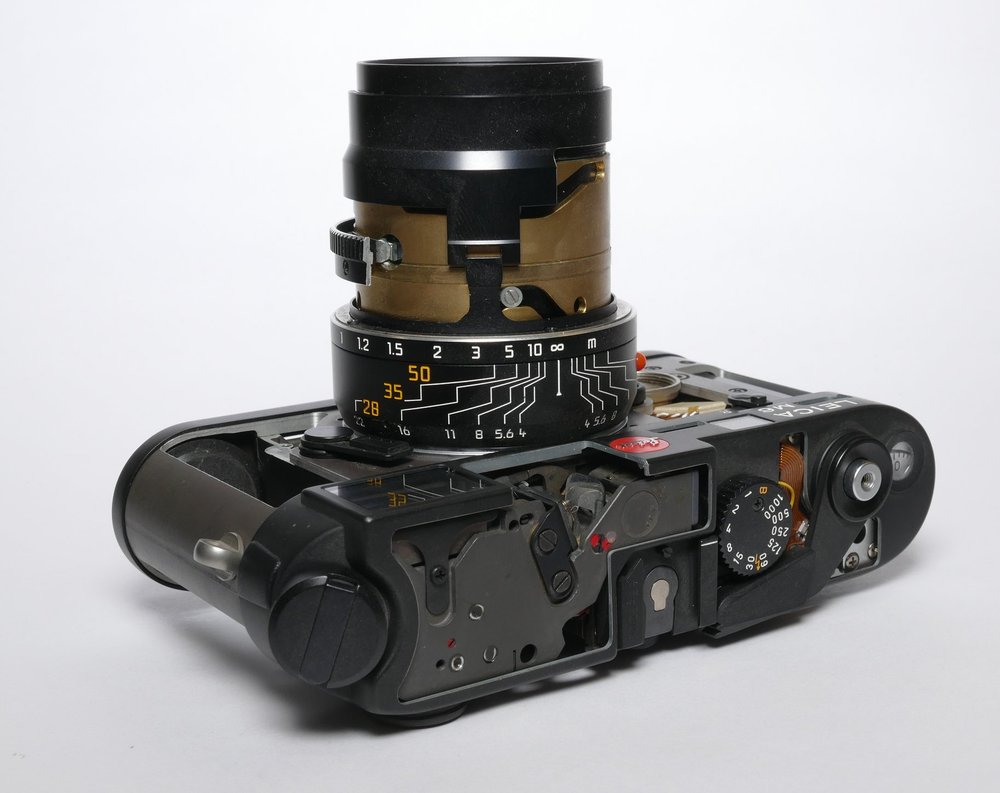
Fun and interesting article Mike. I have several of these Atrappe cameras in my collection, including an M3 with 50 Rigid Summicron, an R3 and a Schnitt M6, and even a pair of 7×35 Trinovids.
The purpose of the Schnitt models are obvious, but I think you missed the point of the Atrappe cameras.
In the days before burglar alarms and video surveillance cameras, the Atrappe cameras were meant as shop window ‘props’, so to speak. I suppose they were meant to ‘con’ an unsuspecting thief, who might be tempted to steal Leicas from the window display of an unattended store. After all, you would actually have to hold the Atrappe in your hands to realize it was not real. being based on the real thing but lacking the guts, so to speak. Back in those days, the Leica represented quite an investment for the consumer and for the shop keeper as well. If a thief came away with nothing of value, such as the Atrappe, it might discourage theft. After all, what would a thief do with such an item? Sell it to someone who could not tell the difference of an Atrappe to a working camera. Could the duped consumer go to their dealer or Leica and say make me a working camera from this? I think not. It would be obvious that they were the receiver of stolen goods.
The other thing to consider is the social habits of folks back in those days. Many would go out for a stroll in the evening, and stores would see this as a way to extend their promotional activities to the hours they were closed. Window shopping was and is still an effective avenue for promotion. This is especially true in Germany, and whenever I am in Germany, I would do the same thing and even photograph the most attractive displays.
The final irony is that these Atrappe models are quite collectible and worth considerably more than the ‘real thing’!
Bill,
Thanks for the additional information. I should have made this aspect clear; I suppose I was assuming that everyone would know that display was the original intention. Only recently I was handling a Fuji X-E1 (I think, not so sure about he model) and it was a plastic display model, very authentic until you pick it up. So there’s nothing new!
If they had been sensible thieves they would have out the Attrapes on a high shelf and left them for 60 years before clogging them to collectors. Patience is everything
‘Attrape’ has a number of meanings including ‘catch’ and ‘con’. Leica and other manufacturers would have produced attrapes for display purposes only. Anyone who knowingly tries to sell an attrape today as a working model is, of course, committing a crime. Attrapes are usually in better condition than working models and, sometimes, they fetch surprisingly high prices at auction depending on rarity and condition. People who who are just photographers and not collectors are, of course, completely mystified by such ‘goings on’. Then again a lot of collectors have fully working ‘shelf queens’ which don’t see any action once their collection achieves a certain size. There are only so many cameras that one can use. I try to give my ‘shelf queens’ a run out every now and then eg this morning two of my more recent acquisitions got a a ‘run around the park’ and two rolls of film await processing. I am not alone in this. I saw a lot of film cameras and film changing hands at Photographica last Sunday.
One final note. The black camera above with the 11 O’Clock ‘bell push’ infinity stop is a II and not a III. It is a lovely set. The ‘schnitt’ version of the Tri Elmar is very interesting. It shows how the different focal lengths are selected and it goes some way to explaining the price of the lens (aside from rarity).
William